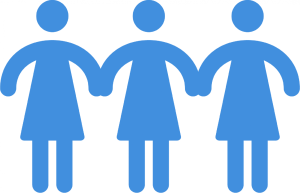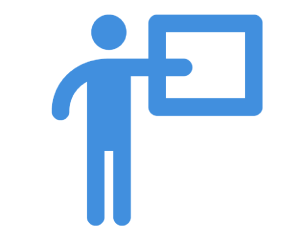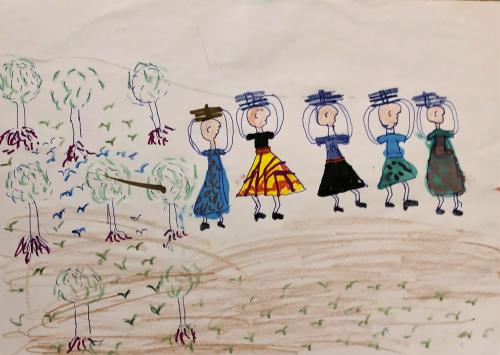Recommendations
Recommendations for Humanitarian Aid Stakeholders
“He might protect himself with the organization’s name, so no one is going to believe her…being in need exposes her to such exploitation.”
Participatory group discussion with Lebanese host community girls
1. INCLUDE WOMEN & GIRLS IN PROGRAM DESIGN
Aid distribution systems must be adapted to more fully meet women and girls’ needs for shelter materials, cash assistance, fuel & firewood, WASH, and food items in ways that minimize opportunities for SEA by aid as well as non-aid actors. The most important way to do that is to ensure women & girls are part of program design.
2. INCREASE ACCESS TO GENDER-BASED VIOLENCE SERVICES
Increase survivors’ access to gender-based violence services—such as healthcare, psychosocial support, and case management—while ensuring access to such services is not contingent on reporting specific instances of abuse, in recognition of the powerful deterrent this can be.
3. RECOGNIZE WOMEN & GIRLS AS CONTEXTUAL SAFEGUARDING EXPERTS
Recognize women and girls as experts in contextual safeguarding and actively engage them in mechanisms designed to improve aid processes and protect against SEA.
4. INCREASED ACCOUNTABILITY AMONG SENIOR MANAGEMENT
Specifically, senior management and safeguarding leads must take responsibility to reflect on their organization’s role in creating a ‘conducive context’ for abuse. Attend to the settings and people who represent ‘causes for concern’, dig deeper into these concerns, and act on them. Ensure perpetrators are held to account.
5. PROMOTE TRANSPARENT AND PARTICIPATORY M&E PROCESSES
M&E staff also have a key role to play. Transparently monitor safety and risk at all points in the distribution process. Share this information with aid actors and community structures. This allows for collective, proactive responses to dangerous situations, and contributes to greater accountability in mitigating SEA (and other forms of GBV).
6. IMPLEMENT EXISTING IASC PSEA & GBV GUIDELINES
Use Empowered Aid’s findings and tools to support training—particularly with frontline staff and SEA focal points. Further implement existing IASC PSEA & GBV Guidelines.
Programmatic Recommendations to Make Aid Distributions Safer: Common Findings Across Lebanon (urban) & Uganda (rural) Sites
Refugee women & girls generated and prioritized these recommendations to make aid distribution safer (for more on this process, see the “Action Analysis Workshop Facilitation Guide” under the Manuals & Toolkits tab on our Resources page).
Implement sex-segregated lines at distribution points to avoid women and girls being pushed out of line and/or harassed, which can put them at risk of SEA when they are exploited by those who offer to take them to the front of the line or otherwise expedite the process.
Provide transportation support for those traveling long distances to collect food, WASH, and other items. Plan distributions in collaboration with women’s committees/leaders, and discuss transport support options (including in-kind or cash/vouchers) for groups identified as particularly vulnerable.
Ensure more women aid workers, volunteers, and leadership structures are involved in aid distribution processes. Involving women in aid deliver increases accountability; and helps women and girls feel safer when aid workers visit their homes.
More security at distribution points (particularly noted for WASH and fuel/firewood aid in Uganda and cash assistance/ATMs in Lebanon) by mixed-sex teams who are well-supervised and trained to proactively mitigate SEA and other forms of violence.
Create accompaniment systems and improve information sharing among women. Women and girls who move in groups, or are together when aid workers or contractors come to their homes, report feeling less vulnerable to SEA and other risks.
Increased community sensitization on what constitutes GBV / SEA and how to make a complaint, to increase the number of people in a community who hold this information. Delivered in diverse ways to reach different groups, including those with low literacy, speak minority languages, and/or adolescents.
Visual representation of Syrian refugee women and girls’ recommendation of ensuring more women aid workers, volunteers, and leadership structures are involved in aid distribution processes.
Visual representation of South Sudanese refugee women and girls’ recommendation of encouraging and supporting formal and informal accompaniment systems for women and girls when collecting and transporting aid.









